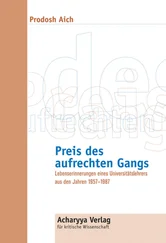We all know one of the ”fundamental laws” of our times: whenever someone gains something, someone else suffers a loss. Whenever social goods are ”distributed”, the probability of unjust distribution is extremely high. This we know too well. We are not eager to examine for how long this has been going on. Why should we? We would be barking up the wrong tree. Therefore, we stick to ”distribution” itself. Whatever is sought after is soon going to run short. Often there are unintentional distributional mistakes. Are we not tempted to take a distributional advantage by manipulation, which might have occurred through the ”malice of the object” as well? Where is the risk? No one will deny that lies and forgeries have been practised widely for centuries with an increasing tendency, supported by an unbelievably rapid growth of marketable technologies.
The technology of digitalisation, for example, makes it possible to manipulate without being detected and enables to make any number of copies of an original and copies of copies without a loss in quality and without any difference from the original. Is this a tremendous cultural achievement? Are we not made believe that it is? Doesn’t this technology open up the floodgates to forgery? This technology dissolves any object in digits, a document, a picture, and a sound, which can be written again and again and converted into the document, the picture, and the sound. Of course some digits may disappear along the way, or some new digits may also appear. In the end there is a final product which is unique and ultimate. It has only to be beautiful and sellable. Is this progress?
Let us come back to the script. With its introduction as a means ( Medium ) of exchange ( communication ), we have lost most of our “visuals” and with it also the modulation of voice which carry special colour and emotions and thus the chance to clarify issues at hand and to reach common assessment. Is it important to know where script was used initially? Or to know how it developed? “Modern scientists” are fascinated by questions like these. But isn’t it a cul-de-sac , a blind alley, or just therapies to keep one busy, a typical trait of the “Guinness- Book-culture”? Or even worse? Is it an effective technique to distract our minds from essential issues? Assuming that it could be established beyond any doubt, where, when and by whom writing was first introduced: would this be a benefit to mankind or just a waste of energy and time that could perhaps better be applied later to gain a real growth of knowledge? We take an example.
We all know that the earth existed for some billions of years and mankind for some hundred thousand of years before Moses made us believe in “his God”. The Christian chronology depends on his story only. We all know as well that man as a “social being” has gone much beyond simple reactions to the impulses of nature: making experiences, remembering experiences, reflecting on them, anticipating and predicting social and natural events, storing environmental features in memory, exchanging this knowledge with contemporaries to check and refine their knowledge. These mutual exchanges mark the beginning of science. And this science has a long history of growth. Therefore we utterly fail to comprehend why “modern scientists” are so obsessed with making us believe that real science is “modern science” only. It is based on “experiments”, characterised by their repetition in the laboratories. This “science” has been in practice for about 300 years. It began in Europe and now covers the world. This lab-based science culture did not creep up on its own. Not only is it wrong. It is also a deliberate, man-made turning point.
We just cannot imagine that the protagonists of “modern science” have not always been aware of the fact that their activities were based on the meticulously accumulated activities of our ancestors. And that every experiment pre-supposes the availability of reliable knowledge. Logically there cannot be any hypothesis without a thesis, just as there is no thesis without a fundament of reliable knowledge. How is it that, despite this, “modern scientists” regard only their own activities as “truly scientific”, and consequently denigrate all former scientific achievements? And this is being done in spite of the tremendous accumulation of knowledge through the ages, based on observation, perception, interpretation, evaluation, replacement and continuous critical inspection of prior assumptions in the light of real life. Not in labs!
How has it been possible for this false premise, this forgery, to be successfully marketed all over the world? An interesting question and an important one as well. Yet, we must leave this question unanswered. But we ascertain here that this caesura introduced by protagonists of “modern science” is false and problematic as well. It excludes one major field of human experience, the metaphysics. The established culture of “modern science” is even worse. Whatever goes beyond the horizon of “modern scientists”, just cannot exist and therefore does not exist. On the other hand, we know that the capacity of comprehension of the “modern scientists” depends much on prevailing market conditions.
*****
Let us go back in time to when our ancestors begin accumulating knowledge and “storing” it in their brains. As alert observers (empiricists) of their environment, they soon notice that there are occasional mistakes while activating their “brain-memory”. So, what to do? They must have tried many ways to make sure that once the knowledge is gained, it is also saved effectively for future. We can comprehend, appreciate the fact that they must have tried out various techniques of memory storage within their scope, starting with collectively practicing to improve their memory to a point of nearly flawless recall. They must have constructed mental crutches, composing realistic stories based on various areas of knowledge and referring to many events metrically versifying strings of facts for easier storage and recall, creating recognisable sound-signs and finally developed external memory storage on long-lasting materials. And, ultimately, signs become symbols, graphical representations, drawings, the alphabet, words and writings.
The variety of „media“ having different ranges and qualities handed down by our ancestors tells us about their apprehensions regarding a possible loss of acquired knowledge, accumulated by face-to-face communication, and, therefore, saved it in as many exterior-memory-storage as possible to support brain memory. They also send us the distinct message that no “exterior memory” is a substitute for “mind memory”. The concept of “signs” in writing to indicate different sounds (phonetics) is a further message for us never to forget the danger of the sound getting lost whilst using “external memories”.
There is no doubt that the invention and development of writing facilities as a medium of language are important cultural achievements. Writing has made possible the storage of accumulated knowledge outside the human brain—though never as accurately as in mind. Thus the limitations of space and time are overcome for intellectual communication. The quantity of experience and their appraisal is thus enlarged. The range of human perception and experience has been enriched. But only as an intermediate complementary to face-to-face communication.
Where there is light, there is shade. As we communicate more and more by writing, it seems, the extent of face-to-face communication is gradually on decrease. Thus the opportunities of immediate verification and correction of erroneous communication are also getting systematically reduced. We know from our daily experiences that it is often difficult to put ideas into words, though they are clear in our minds. Even more so, when they have to be written down as a communication for others. In face-to-face communication we can mutually observe the reactions and make sure that intended messages are received without distortions. In cases of doubt we choose different words, change the sentences, resort to gesticulation and repeat at times the whole process. We provide additional explanations. We end the process of exchange in mutual understanding. Face-to-face communications are far less prone to misunderstandings.
Читать дальше












